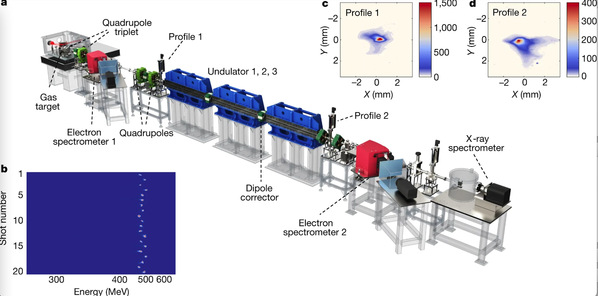Free-electron laser (FEL) is the light source that can produce intense X-ray radiation for a wide range of applications. It can generate ultrashort pulses at timescales shorter than femtosecond (10-15s). At these spatial and temporal scales, there is little difference between biology, chemistry and physics, and FELs have revolutionized all three disciplines. FELs have enabled matter to be frozen in place and observed at the microscopic level, allowing scientists to resolve the motion of atoms or electrons, control chemical reactions and follow the dynamics of chemical bonds or energy-transfer processes.
Recently, scientists from Shanghai Institute of Optics and Fine Mechanics, Chinese Academy of Sciences (SIOFM, CAS), and ShanghaiTech University have successfully taken a novel approach to obtain FEL and such an approach may realize the production and popularization of low-cost, table-top FEL devices that may bring breakthroughs in multiple disciplines. Their result was published as the cover story of Nature in the issue of July 22. Secretary of the Party Committee of ShanghaiTech, Research Fellow of SIOFM, Li Ruxin is one of the corresponding authors. PhD Candidate Jiang Kangnan from ShanghaiTech and SIOFM joint PhD program is one of the co-authors.

Schematic layout of the novel compact free electron laser experiment
The application of the potential compact FEL technology is likely to immensely expand human’s understanding of the mystery of life and the revolution of living things. The researchers explained that there are currently eight FEL facilities in operation in the world but the size of the facilities range from 300 meters to 3.4 km, thus limiting the popularization of the FEL facilities and broader applications.
“We proved the feasibility of the new technical route with the laser electron accelerator with ultra-high acceleration capability, and it downsized the facility size from kilometer level to 12 meters,” said Leng Yuxin, deputy director of the institute.
Researchers raised an example of potential future applications brought by the small-sized FEL facilities. Even if a patient undergoing X-ray imaging moves quickly at the speed of light, a machine with the technology can still produce an imaging with impressively high resolution.
Read more at: https://www.nature.com/articles/s41586-021-03678-x

